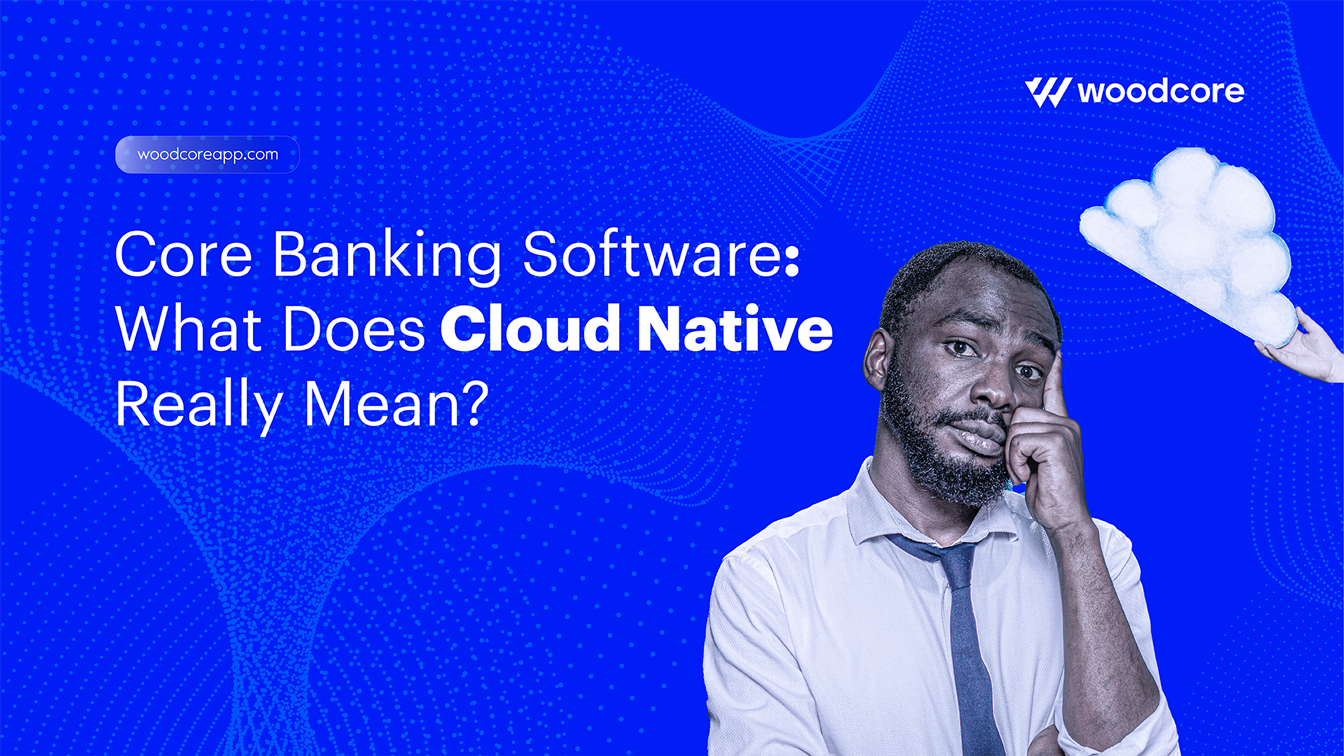- Published on
The Truth About Cloud Banking: Debunking 5 Common Myths
- Authors
- Name
- Woodcore
Authors
Let's discuss cloud-banking myths. Times are changing, and financial organizations are looking for more innovative ways to enhance operations and deliver even better quality services to their customers. One such way is cloud banking. The cloud banking market was worth [301 billion by 2032.
Although a lot of bank executives say that cloud computing is one of the top technology priorities for their institution, only about 27% of banks have actually migrated to the cloud due to some concerns. Some of the most popular concerns include costs and privacy concerns. In this article, we’ll bust five myths about migrating to the cloud that you probably thought were true.
Cloud-banking myth 1: Cloud-based services are more expensive than in-house offerings
Reality: Cloud migrations help you save long-term by simplifying your go-to-market process. Since most cloud-based services are offered through a pay-as-you-go pricing model, you’ll be reducing your initial capital outlay and saving on monthly maintenance.
While banking services hosted in-house might seem like they allow you to better manage costs, the truth is that you’ll likely spend more on maintenance and upkeep with on-premise software than you will by moving cash management solutions to the cloud.
According to Jan-Willem Weggemans, a banking professional, “The cost ratio of banks could be halved by migrating to the cloud which enables transforming the bank’s applications and operating model, and automating many manual processes at the same time.”
Other studies by the Bank of England Research and Microsoft show that migrating to platform-as-a-service environments yields a 466% return on investment and has the potential to reduce technology infrastructure and maintenance costs by 30–50%.
Cloud-banking myth 2: The cloud isn’t secure
Reality: Cloud services are typically more secure than on-premise servers. Cloud servers are stored in warehouses with highly restricted access. That means that very few employees ever see the data held within those files, and even if they could access it, they’d need an encryption code to make sense of it.
Not only do cloud servers prevent internal data breaches, but they also have measures in place, like robust firewalls that protect against external attacks. Cloud-based services also receive timely security updates, servers are consistently monitored for suspicious activity, and providers implement new best practices as they emerge to ensure the safety of any information shared with or stored in the cloud.
Cloud-banking myth 3: I might lose control of my data if it’s stored in the cloud
Reality: The beauty of the cloud is that it can exist anywhere and still fit the needs of a global body. A financial institution in Nigeria could choose to store data on a cloud server in South Africa, for example, if executives felt that it was more advantageous to do so.
This freedom has given rise to some interesting theories about data access, control, and ownership. After all, if the cloud servers reside in a foreign locale, isn’t it possible that governing forces in that location could take control of data?
Thanks to data sovereignty measures in place across many places, the answer is no. Data sovereignty ensures that storage and access to cloud data are subject to the laws of the country in which it originated.
That means that the act of safeguarding and storing data must comply with that country’s rules and regulations regarding those practices. Furthermore, data residency requirements ensure that information stays put, restricting cloud providers from moving banking records to a server in another country. Finally, cloud providers adhere to the latest data control protocols to safeguard your information and ensure that only you and your authorized users have access.
Cloud-banking myth 4: A single cloud-based solution won’t fit all my customers’ needs
Reality: It’s true that the needs of a small bank may not be the same as a larger corporation. However, if you’re thinking you’ll need multiple solutions as the number of customers increases, then you’re not realising the flexibility of the cloud.
Cloud-based solutions are housed on platforms and connected to financial institutions via APIs. APIs are software applications that serve as connections and enable the products on one platform to directly interface with banking data and systems on another platform. APIs provide remarkable flexibility and offer a modular approach to solution design. As a financial institution, you can build a complete cash management solution, offering the modules necessary to meet client needs.
APIs also provide the perfect opportunity to scale into new markets while also tailoring offerings to the individual needs of each business client, all from a single interface. Check out the APIs that Woodcore offers here.
Cloud-banking myth 5: Cloud-based applications are slow
Reality: Of all cloud-banking myths, one of the biggest is that operations will run slower and reports will take longer compared to on-premise applications. According to McKinsey, this simply isn’t true, as there is little difference between the inner workings of a cloud service provider and the bank’s own data centre. In fact, their research shows that cloud latency is usually created by banks as they employ extra measures, such as backhauling data, to enhance security rather than trust the cloud.
With the right configuration and tuning, operations on the cloud can run as fast and stable as they do on-site. Your operations can run smoothly on the cloud without you having to compromise on speed or quality performance.
While the cloud itself is still maturing and has space for some improvements, it has immense benefits for financial organizations. With the right hosting environment, your cloud-based applications can offer even greater security than your on-premise solutions. You’ll remain in compliance with regulations while reducing your costs and offering better overall security for your data and operations. Contact us at Woodcore, to get started on capturing all these benefits of the cloud.


